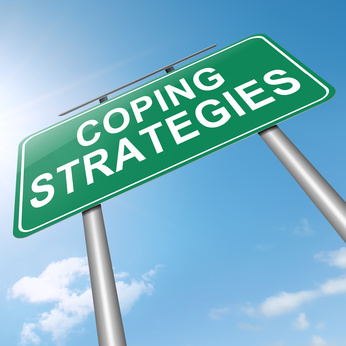Depression can zap your energy and make you want to stay in bed with the covers over your head. Tempting though that is, it won’t help you move forward and toward feeling better. Treating depression calls for action, which sometimes means that even though you absolutely don’t feel like it, you use all the energy you can muster to start to reverse the course. Imagine turning around a ship at sea—it’s going to be slow going at first but once the momentum builds and it completes its turn, it’s going to begin to move smoothly in the other direction. That’s how depression can be—we may ask you to “fake it ‘til you make it” as you start to slow the ship down and begin the task of turning it around…but once you get going, those healthy behaviors will start to feel right again and you’ll start chugging along, back to the life you want. Following are some tips and tools for starting to turn depression around:
1. Get busy doing something you enjoy.
What did you used to enjoy? Taking a walk on a nice day? Going to the park? Fishing? Whatever it was, start doing it again, even if it’s just for a little while. This is definitely one that falls in that “fake it ‘til you make it” category—don’t expect to thoroughly enjoy it the first time you go back at it. But if you hang in there, your mood will start to follow your behavior. We call this “behavioral activation” which is another way of saying “get back in the mix.”
2. Get busy doing something that you need to get done.
Depression is mean in so many ways, and one of them is that it keeps you from doing the things you know you need to do—the dishes, the bills, laundry, grocery shopping. You look around and the piles of stuff are overwhelming and add another layer to your depression. So pick just one thing to do and spend 10-15 minutes the first day making some progress. No judging yourself for not doing more! Your goal is just to start. Pick one pile of papers to sort, or do one sink full of dishes, or one load of laundry, or make one phone call. If you feel like doing more, fantastic—dive in. Again, the mood will follow the behavior. As you accomplish a bit more each day you’re going to start to feel more in control of your life.
3. How are you eating?
Depression can produce a loss of appetite or overeating. If you are not getting enough nutrition, your body will feel more sluggish and less able to accomplish the tasks in items 1&2. Make it a goal to eat more, starting with some of the things that have been favorites in the past. If you’ve gained weight while depressed, now is not the time to start beating yourself up for that! As you become more active physically and feeling better emotionally some of the weight may come off; if not, you will eventually regain the resolve needed to take off the weight. Give yourself time.
4. How are you sleeping?
Good sleep is a great way to make progress in regard to depression. Unfortunately, depression tends to disrupt our sleep, causing insomnia, frequent awakening during the night, or early awakening. And when you’re exhausted, everything looks worse. There are some things you can do to improve your chances of getting a good night’s sleep, however. If you’ve gotten in the habit of staying up late and then sleeping during the day, it’s time to start to reverse that trend. Start going to bed a little earlier each night until you are laying down to sleep at a decent hour. Set the alarm to go off in the morning. Prior to going to bed, no electronics—that means phone is put away, computers are off limits, and no television. The lighting from electronics can mess with your sleep if you don’t give yourself a long enough gap between their use and bed time, so give yourself some quiet time to wind down before trying to sleep. In terms of the sleep environment, make sure your bed is comfortable and that the room temperature is toward the cool side. If you are beset by worries when you close your eyes, try using some pleasant imagery to distract you from the worries and help you drift to sleep (see below). If after 20 minutes you are still unable to sleep, get up out of bed and go do something that is not all that interesting (continue to avoid electronics) and that will allow you to become drowsy. When you think you are ready, return to bed. Finally, avoid taking a nap the next day so you will be better able to go to sleep the next night.
5. Use pleasant imagery when you need a break from worries or to help you fall asleep.
To do this, take a memory or create a scenario in your mind that is pleasant (and neutral—nothing that will trigger bad memories in some way!) and enter into this scene in your mind. Make the scene as detailed as possible with lots of things to see, smell, taste, touch hear. Spend at least 20 minutes wandering through the scene, engaging your mind. Clients have found imagery of beautiful, elaborate gardens or visiting the seashore to both be good resources for these scenes.
6. Use deep breathing.
If you find that you are restless and keyed up (which can be a symptom of depression), deep breathing is a good way to bring back some calm. When we’re stressed we tend to engage in shallow chest breathing. Instead, try slowly pulling in a good, deep breath that actually makes your stomach expand and which completely fills your lungs. Exhale slowly. Repeat several times and notice how your body starts to relax.
7. Notice your thoughts and challenge those that are unhelpful and/or inaccurate.
Depression is notorious for creating nasty, untrue thoughts about ourselves in our own brains. Believing those thoughts can keep us stuck in depression. Recognize that your brain is picking on you and that just because you have these thoughts doesn’t make them true. See if you can challenge the accuracy of the thoughts (are you jumping to conclusions? Exaggerating the outcome of something? Seeing things in black and white rather than in shades of gray? Forgetting an important part of the story that changes how you see the outcome?). If you need help with developing this tool, contact a therapist that you feel comfortable working with and who can coach you through this process.
8. Seek support.
Let supportive others know you’re struggling. You may be surprised to find that they’ve been through depression themselves or know someone who has. If there is no one you feel you can talk to, look into joining a support group that is dedicated to working toward recovery by sharing ideas and support with one another (you don’t want a group that spends its time complaining—that doesn’t help!). Talk to your doctor—he or she may recommend medication or other interventions to help you feel better. Finally, consider individual or group therapy – there are many effective therapies that can help you move through the depression and on to the live you want.
Please, if you are feeling suicidal, seek help immediately by calling 911, going to your nearest emergency room, or calling the National Suicide Prevention Lifeline at 1-800-273-8255. People at the lifeline are available 24 hours a day, 7 days a week and provide services in both English and Spanish.
If you would like to discuss your depression concerns with Dr. Jana Drew or schedule an appointment, please call her at 512-960-5265 or contact her here. Dr. Drew provides free 30-minute consultations and would welcome the opportunity to work with you.



